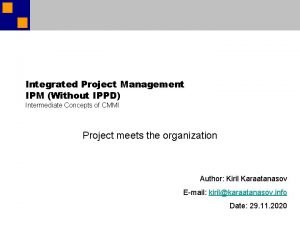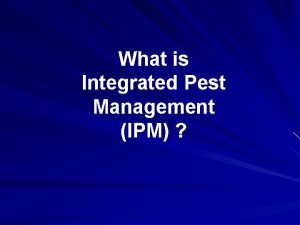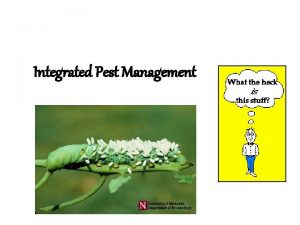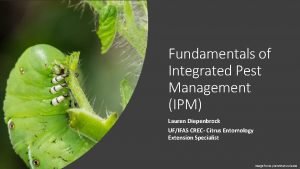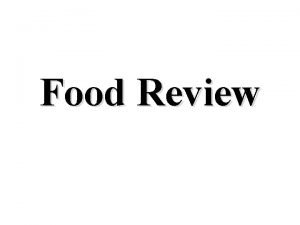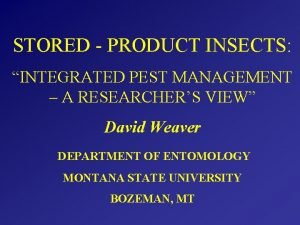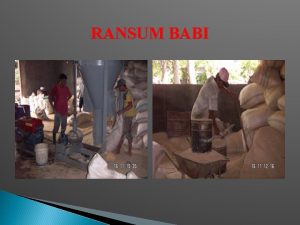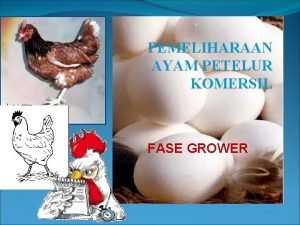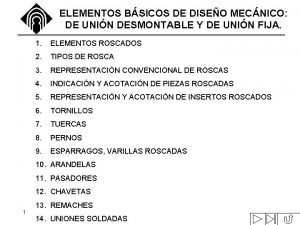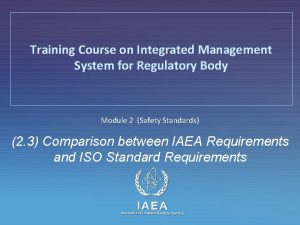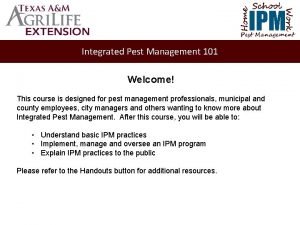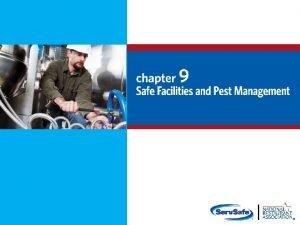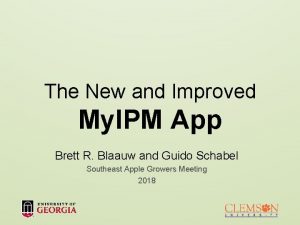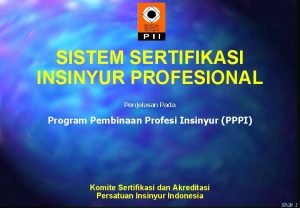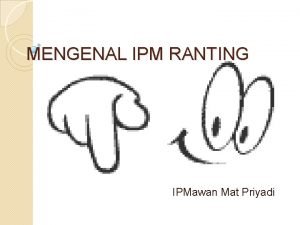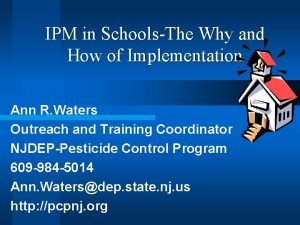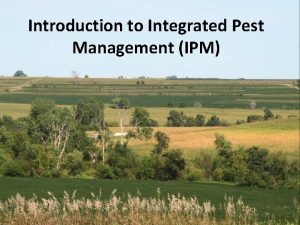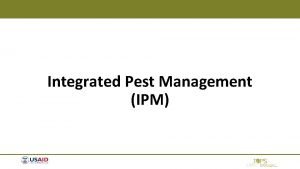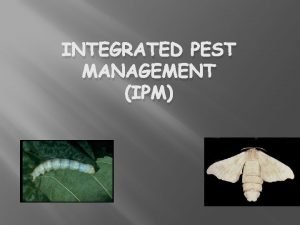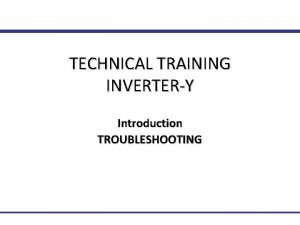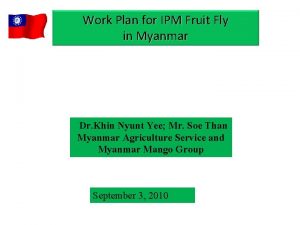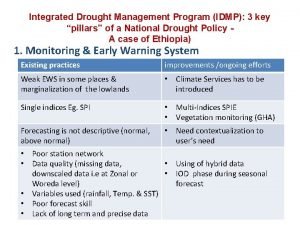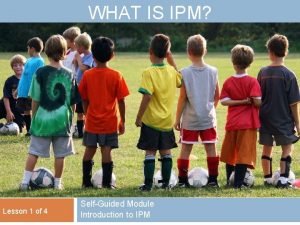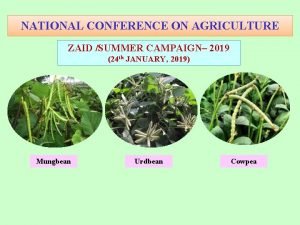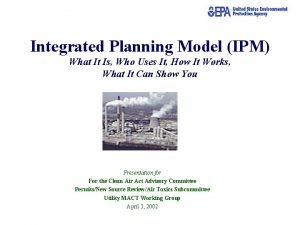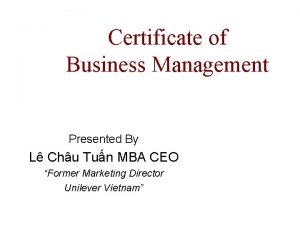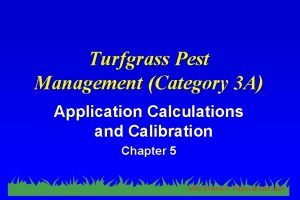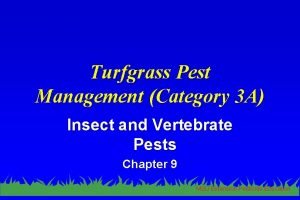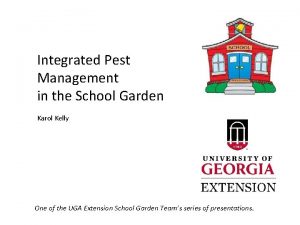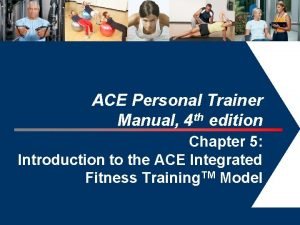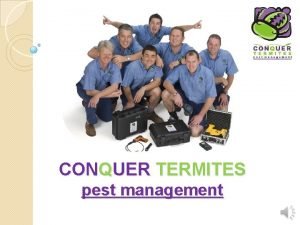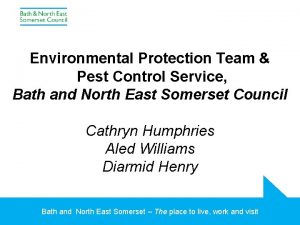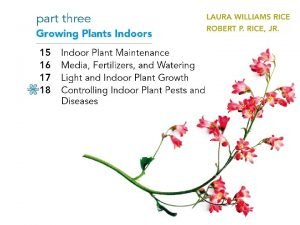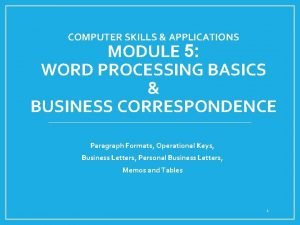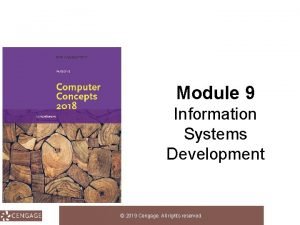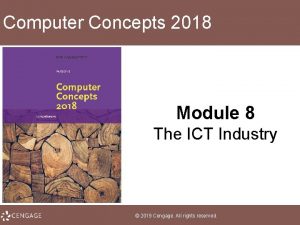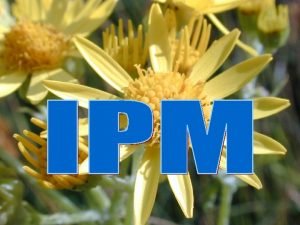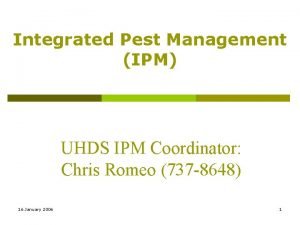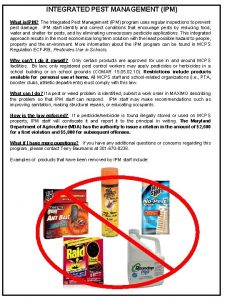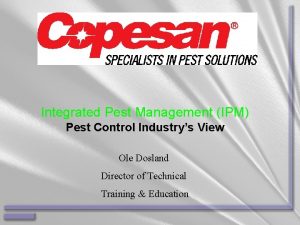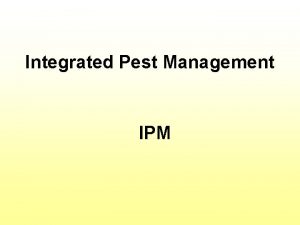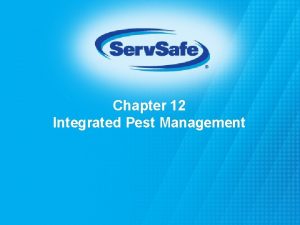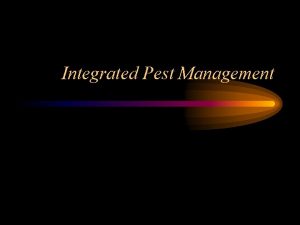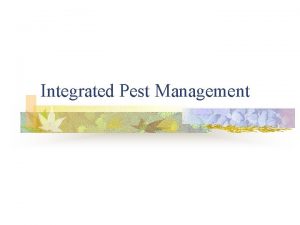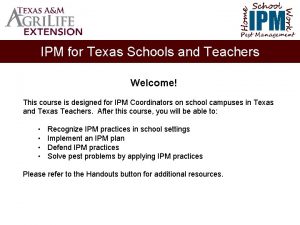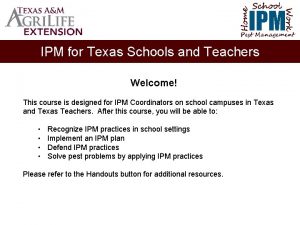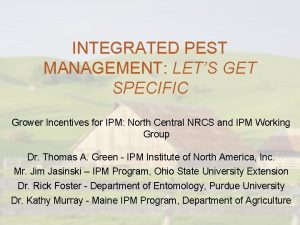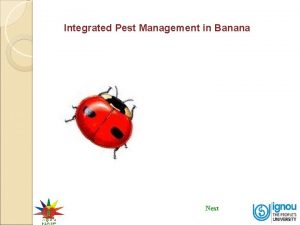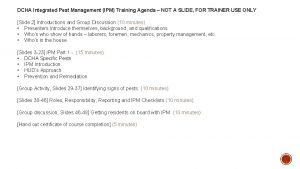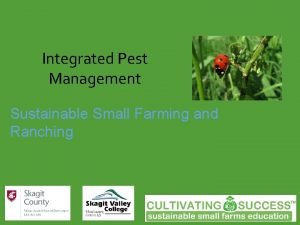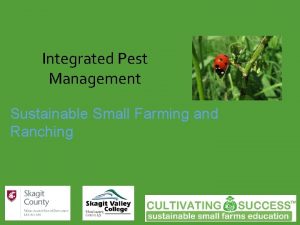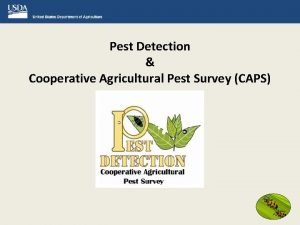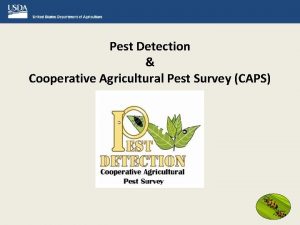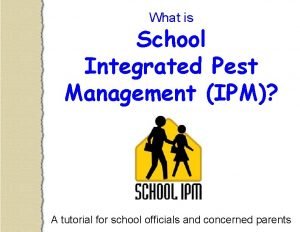Integrated Pest Management IPM concepts and grower training







































- Slides: 39

Integrated Pest Management (IPM) concepts and grower training needs in Hawaii’s tropical fruit industry Is IPM a sustainable approach to managing pests? [Sustainable: “method of using a resource so that the resource is not depleted or permanently damaged”] Pest Control – often creates its own problems – can lead to permanent “damage”.

Pest Management vs. Pest Control • Pest management aims to maintain insect populations below a threshold; • Emphasis is not on eradication.

The UH IPM Verification Program IPM Implementation on 75% of Hawaii's Crop Acres by the Year 2001. Our highest priority is implementation to meet President Clinton’s goal for IPM implementation on 75% of the nations crop acres. http: //www. extento. hawaii. edu/IPM/

Verification is based on points allocated for: • Development and implementation of IPM procedures; • Monitoring, application of various options, justification for each action. • Farmer provides documentation for annual audit.


Insects – prevalent features of our environment • Number of species; • Interactions in ecosystems and with us; • Our major competitors.

Understanding insect numbers • May be explosive outbreaks • Seasonal changes in numbers; • What are the causes of changes in abundance?

• Insect ecology examines dynamics of insect numbers temporally and spatially; • Phenology and diversity are also important; • Interactions with plants and other insects.

• Ecology aims to explain how environment (biotic and physical) affects abundance, phenology and diversity of insects; • Therefore ecology forms the basis for pest management. • Understand both ecology and economy to implement IPM

Some history: Dealing with pests • Pre-insecticide era: 2500 B. C. : Sulfur, herbs and oils used to protect seeds and stored grain. • 300 B. C. : Plant phenology recognized as a means of avoiding pests; Chinese started using natural enemies of insects.

• By 1101, Chinese used soaps to control pests; • Late 1600’s: tobacco infusions , arsenic used. • 1700’s: Importance of temperature summation in determining insect phenology discovered! Plant resistance used in the USA; Botanical insecticides rediscovered.

• 1800’s: inspection and quarantine became important; • 1920 - 1930’s: Depended on crop sanitation, timing of planting, minor use of insecticides. • Insecticide era: ~1939 - 1962: DDT was discovered; Organophosphates later. • Purely insecticide-based approach to pest problems emerged. • 1962: Silent Spring by Rachel Carson

• The concept of Integrated Pest Management was developed. • Emphasized the selective use of insecticides, and conservation of natural enemies. Emphasis shifted from control to management. Tolerance, rather than decimation encouraged.

Elements of IPM: • Multiple tactics used in a compatible manner; • Pest numbers below levels that cause economic damage; • Consideration of environmental impact.

IPM = Sustainable Pest Management?

Aims of IPM: • Reduce pest populations to levels below those causing economic impact, using multiple, compatible techniques; • Reduce environmental impact of pest management.

Economic injury level Lowest number of insects that will cause economic damage.

Economic / Action threshold: Number of insects that should instigate management action

Economic decision levels - thresholds • Usually expressed as number of insects per area, plant, or sampling procedure • Sometimes use extent of plant damage • Include biological and economic information

Gain threshold • Expresses the beginning point of economic damage. • Insecticide application would have to save 5 bushels per acre to be profitable

Economic threshold • Also called Action Threshold – Insect density that would justify intervention • May be a fixed economic threshold: e. g. if EIL is 6 insects per plant, intervene at 4 insects per plant;

Number of Insects Economic loss Non-economic loss No loss Time

Time Number of Insects

IPM Options: • Biological control • Physical control • Cultural control • Chemical control Monitoring insect numbers is the cornerstone of IPM

Approaches to monitoring: Various methods: • Direct counts • Traps • Damage estimates • Prediction: degree-days

Benefits of monitoring: • Track numbers of pests and natural enemies; • Able to target insecticide applications at the correct time; • Enhances conservation of natural enemies; • Indicate efficacy of treatments.

Biological control: • Natural enemies of pests cause mortality; • Can maintain pest population at below-threshold levels Predators Parasitoids Pathogens

Types of BC: • Import natural enemies - establish in field Classical BC; • Augmentative releases: inundative or inoculative releases each season; • “Conservation” BC: depend upon local natural enemies. • All these approaches require conservation of natural enemies to be effective.

Conserving natural enemies Reduce insecticide use; Use softer chemicals; Manipulate habitats, e. g. intercropping.

Concerns: Biological Control • Non-target effects? • “Necessary evils: murder, drugs and biological control” (Lockwood 1999) • Host specificity testing • Risk assessment protocols?

Insecticides • Insecticides as resources: Huge financial investment for development; Potential for Use or Abuse of this resource; Can play an important role in providing options for pest management.

Problems with insecticides: • • Kill or disrupt natural enemies Secondary pests Residues on produce Build-up of resistance – insecticide “treadmill” • Environmental concerns

Build-up of resistance: 2 1 3 4

Dealing with resistance • • • Wrong approach: Raised concentrations of active ingredients! Increased frequency of application! Correct approach: Reduce reliance on chemicals. Alternation of chemical groups. Targeted insecticide applications.

Example of rotation program: Pyrethroids Organophosphates “Organics” IGR’s Carbamates CHC’s

Benefits of insecticides: • • Can be effective if used correctly Can provide an immediate solution New formulations are safer Target-specific modes of action are being developed • Effective chemicals should be conserved as a component of sustainable pest management programs.

Summary • IPM requires pest and beneficial insect identification; • Need effective means of managing these; • Require economic information; • Require training to encourage adoption.

Are fruit growers interested in IPM training and verification? • What are the needs of growers in terms of training? • Would verification be valuable to you? • Should we proceed to develop verification guidelines?

Mark G. Wright Department of Plant & Environmental Protection Sciences, CTAHR, UHM Tel: 808 956 -7670 Email: markwrig@hawaii. edu Website: http: //www. ctahr. hawaii. edu/wrightm
 Ipm integrated project management
Ipm integrated project management Objectives of ipm
Objectives of ipm Integrated pest management
Integrated pest management Integrated pest management
Integrated pest management Integrated pest management ____ than pesticides.
Integrated pest management ____ than pesticides. What is the third step in integrated pest management?
What is the third step in integrated pest management? Kebutuhan nutrisi babi
Kebutuhan nutrisi babi Fase grower ayam petelur
Fase grower ayam petelur Arandela grower
Arandela grower Integrated management systems training north america
Integrated management systems training north america Cultural ipm
Cultural ipm Safe facilities and pest management
Safe facilities and pest management My ipm
My ipm Ipp ipm ipu
Ipp ipm ipu Ipm adalah
Ipm adalah What is an ipm plan
What is an ipm plan Ipm meaning
Ipm meaning Ipm meaning
Ipm meaning Sejarah ipm
Sejarah ipm O'general ac error code list
O'general ac error code list Ipm myanmar
Ipm myanmar Pillars of ipm
Pillars of ipm Ipm grade 1
Ipm grade 1 Ipm indeks pembangunan manusia
Ipm indeks pembangunan manusia Ipm 410-3 (shikha) price
Ipm 410-3 (shikha) price Integrated planning model
Integrated planning model Ipm pipe
Ipm pipe Ipm tuyển dụng
Ipm tuyển dụng Turfgrass pest management (category 3a practice test)
Turfgrass pest management (category 3a practice test) Pest management alliance
Pest management alliance Turfgrass pest management
Turfgrass pest management Biological control
Biological control Ace ift model
Ace ift model Conquer termites south - central
Conquer termites south - central Pest control in bath
Pest control in bath Swot and pest
Swot and pest Pest and disease control
Pest and disease control Module 5 computer concepts skills training
Module 5 computer concepts skills training Module 9 computer concepts exam
Module 9 computer concepts exam Module 11 computer concepts exam
Module 11 computer concepts exam
